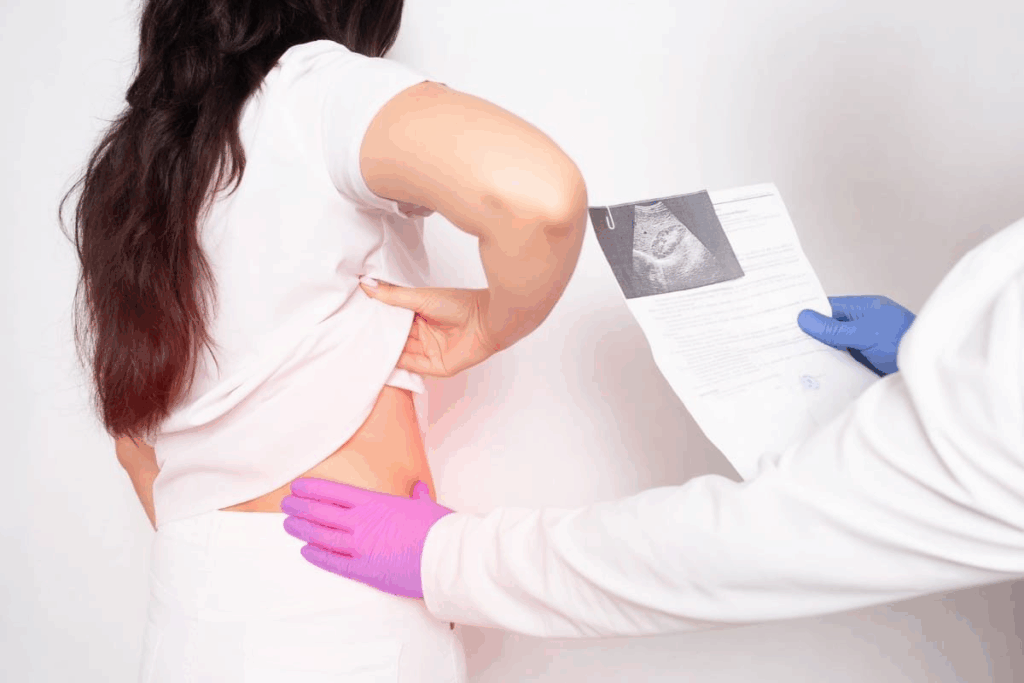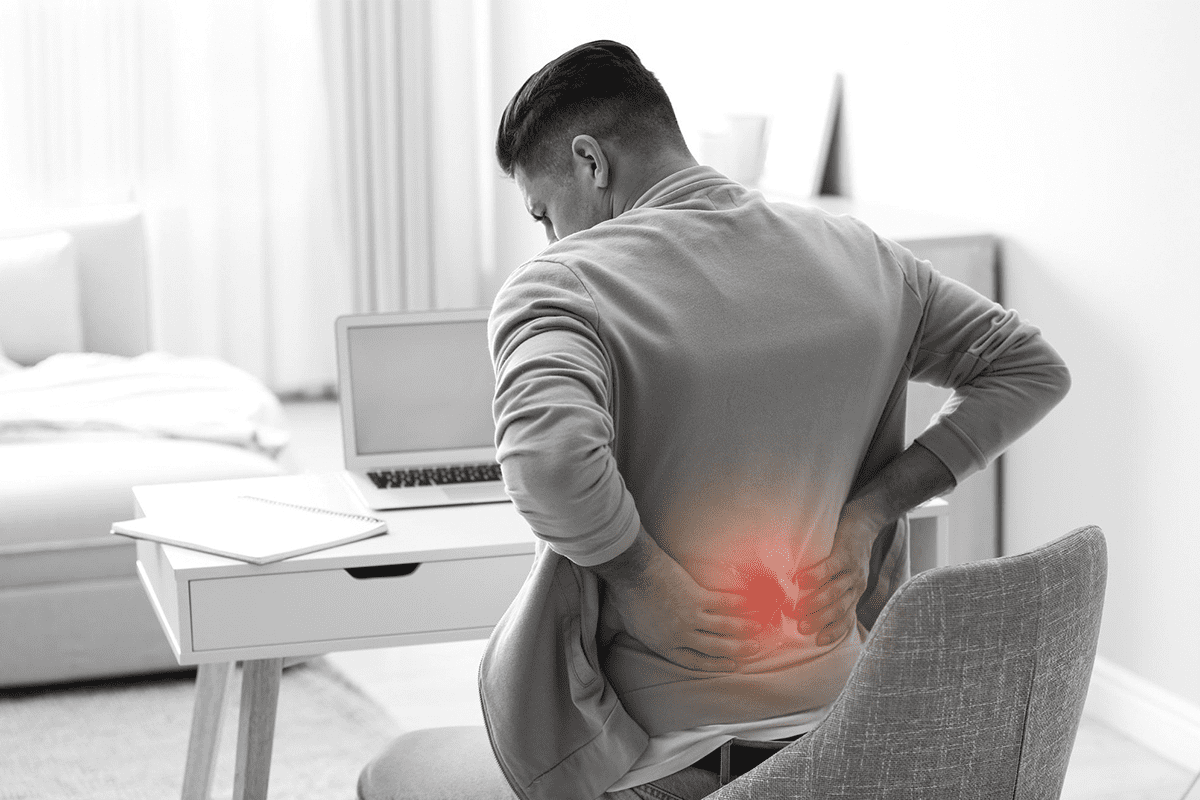Last Updated on October 31, 2025 by

Uric acid nephrolithiasis is a big problem worldwide, affecting millions. But, with the right treatment, almost two-thirds of these kidney stones can dissolve without surgery.
At Liv Hospital, we know how important it is to manage uric acid kidney stones well. Our plan includes medical treatment, staying hydrated, and making urine more alkaline. This helps patients find long-term relief.
Knowing what causes and increases the risk of uric acid stones is key. Patients can then take steps to avoid getting them again and manage their condition better.
Uric acid renal stones treatment: Learn the most effective methods, including medical dissolution, for managing these kidney stones.

Kidney stones made of uric acid are becoming more common. This is linked to health issues like obesity and diabetes. These stones can cause a lot of pain and problems if not treated right.
Uric acid kidney stones are hard deposits in the kidneys. They form when urine is too acidic. Uric acid stones can be different sizes and cause various symptoms based on their location.
Uric acid stones make up 8-10% of all kidney stones globally. They are the second most common, after calcium oxalate and calcium phosphate stones. The rise in uric acid stones is linked to more cases of type 2 diabetes, metabolic syndrome, and obesity.
Condition | Relation to Uric Acid Stones | Prevalence |
Type 2 Diabetes | Increased risk due to insulin resistance and metabolic syndrome | High |
Metabolic Syndrome | Associated with insulin resistance and obesity | Moderate to High |
Obesity | Linked to increased uric acid production and concentration in urine | High |
Unlike calcium stones, uric acid stones can often be dissolved with treatment. Their composition and causes of formation are different. Knowing these differences is key for effective treatment.
We will look deeper into how uric acid stones form and how to manage them. This will help both patients and healthcare providers.

Understanding how uric acid stones form is key to preventing and treating them. Stones develop when several factors come together. This creates the perfect environment for stones to form.
Uric acid is a byproduct of purine metabolism in our bodies. Normally, it dissolves in urine and is excreted. But, an imbalance in uric acid metabolism can lead to hyperuricosuria. This is when there’s too much uric acid in the urine.
Diet, genetics, and some medical conditions can cause this imbalance. For example, eating a lot of purines can raise uric acid levels. Gout is another condition that can increase uric acid.
Several key factors contribute to uric acid stone formation. These include:
These factors often work together, raising the risk of stone formation. For instance, someone with low urine volume and acidic pH is more likely to get uric acid stones.
The pH of urine is very important in stone formation. Uric acid dissolves better in alkaline urine and worse in acidic. So, an acidic urinary pH below 5.5 increases the risk of stone formation.
Keeping urine pH balanced is key to preventing stones. This can be done through diet and, if needed, medication to make urine more alkaline.
Uric acid stones form due to genetic, medical, and dietary factors. Knowing these risks helps in prevention and treatment.
Some medical conditions raise the risk of uric acid stones. These include gout, chronic diarrheal conditions, and diabetes mellitus. Obesity, hypertension, and aging also increase the risk.
Genetics play a big role. Some people inherit disorders that affect uric acid processing.
Diet is key. Eating foods high in purines, like certain meats, raises uric acid levels. A diet lacking fruits and vegetables also increases the risk.
Risk Factor Category | Specific Factors | Impact on Uric Acid Stones |
Medical Conditions | Gout, Chronic Diarrhea, Myeloproliferative Disorders | Increases uric acid production or reduces its excretion |
Genetic Factors | Inherited Metabolic Disorders | Affects uric acid metabolism |
Dietary Contributors | High Purine Foods, Low Fruit and Vegetable Intake | Increases uric acid levels in the urine |
Understanding these risks helps prevent uric acid stones. Manage health conditions, choose the right diet, and live a healthy lifestyle.
Uric acid kidney stones can cause a range of symptoms, from severe pain to no symptoms at all. This makes it hard to diagnose. We will look at the common signs and symptoms of uric acid nephrolithiasis. We will also talk about when you should see a doctor.
People with uric acid nephrolithiasis may have:
In some cases, uric acid stones may not cause any noticeable symptoms until they obstruct the urinary tract, leading to complications.
Seek medical attention if you experience:
Getting medical help quickly can prevent complications and help find the right treatment.
Uric acid stones can be told apart from other types of kidney stones through various tests. The table below shows the main differences in symptoms and test results.
Stone Type | Common Symptoms | Diagnostic Findings |
Uric Acid Stones | Severe pain, nausea, hematuria | Radiolucent on X-ray, visible on CT or ultrasound |
Calcium Stones | Similar to uric acid stones, often with more hematuria | Radiopaque on X-ray, variable appearance on CT or ultrasound |
Struvite Stones | Often associated with urinary tract infections | Typically visible on X-ray, characteristic “staghorn” appearance |
Knowing these differences is key for accurate diagnosis and effective treatment. We suggest talking to a healthcare professional for personalized advice and care.
Diagnosing uric acid renal stones is a detailed process. It uses clinical assessment, lab tests, and imaging. Accurate diagnosis is key for a good treatment plan.
Understanding your medical history is vital. We look for signs like gout, obesity, and certain diets. A physical checkup can also help, but it’s not always clear.
Labs are essential for diagnosis. They include:
Imaging is key for finding uric acid stones. These stones might not show up on X-rays, but other tests can:
If a stone is passed or removed, we can analyze it. This confirms if it’s a uric acid stone. Knowing this helps us plan treatment and prevent more stones.
In summary, finding uric acid renal stones involves many steps. We use medical history, lab tests, imaging, and stone analysis. This way, we can accurately diagnose and treat these stones.
Treating uric acid renal stones focuses on medical methods. These aim to dissolve the stones and ease symptoms. Medical dissolution therapy is a key treatment, being non-invasive.
Medical dissolution therapy uses medicines to break down uric acid stones. It works best for small to moderate-sized stones. Potassium citrate is often used to make urine less acidic, helping dissolve the stones.
Studies show this therapy works in 70-80% of cases. It’s a first-choice treatment for many.
We suggest potassium citrate therapy. It not only dissolves stones but also lowers the chance of new stones forming. This is because it makes urine less acidic.
“Potassium citrate therapy is effective in dissolving uric acid stones and preventing recurrence by alkalizing the urine.”
— Journal of Urology
Managing pain is key when treating uric acid stones. Doctors often use NSAIDs and opioids for pain relief. The choice depends on the pain’s severity and the patient’s health history.
Medication Type | Use in Uric Acid Stones | Side Effects |
NSAIDs | First-line for mild to moderate pain | Gastrointestinal upset, kidney injury |
Opioids | Reserved for severe pain | Constipation, respiratory depression, dependency |
Medical treatment works best when started early. Those with a history of uric acid stones or at high risk benefit from early action. This includes diet changes and medicines to control uric acid.
Early intervention can avoid severe pain, infection, and kidney damage. We stress the need for follow-up care to adjust treatment as needed.
Understanding medical treatments for uric acid stones helps patients make informed choices. We tailor treatment plans to meet each patient’s needs, aiming for the best outcomes.
Urinary alkalinization is key in dissolving and stopping uric acid kidney stones. It makes urine more alkaline, which helps dissolve stones and stops new ones from forming.
To use urinary alkalinization well, knowing the right pH is important. A pH between 6.0 and 7.0 is best for uric acid stones. This range helps a lot in treatment.
Potassium citrate is a common treatment for this. It raises urine pH and also lowers calcium in urine. This helps prevent other types of stones too.
Benefits of Potassium Citrate:
Sodium bicarbonate is another choice for making urine more alkaline. But, it must be used with care because it can cause stomach problems.
Treatment Option | Benefits | Considerations |
Potassium Citrate | Raises urine pH, lowers calcium | Usually safe, but might upset stomach |
Sodium Bicarbonate | Makes urine pH rise fast | Can upset stomach, needs watchful use |
Patients on urinary alkalinization therapy should check their urine pH at home. They can use pH paper or a meter. This helps adjust medication to keep pH right.
Understanding and using urinary alkalinization techniques well can greatly help patients with uric acid stones. It’s a simple yet effective way to improve treatment results when used with other treatments.
Managing uric acid stones needs a full plan. This includes drinking enough water and changing your diet. Drinking enough water helps dilute your urine. This makes it less likely for stones to form.
Drink at least 2 liters of water a day to prevent stones. Adequate hydration keeps your urinary system healthy. It’s not just how much you drink, but what you drink too. Try to avoid sugary and caffeinated drinks.
Here are some tips for drinking the right amount of water:
Some foods can make stones more likely. Avoid foods high in purines, like organ meats and some seafood. Also, foods high in animal proteins and sugar can make it worse.
Here are some foods to limit or avoid:
Eating certain foods can help manage uric acid levels. Foods high in fiber, like fruits, veggies, and whole grains, are good. Also, drinking water and eating alkaline foods or taking supplements like potassium citrate can help.
“A well-balanced diet that is rich in fruits, vegetables, and whole grains can help reduce the risk of uric acid stone formation.”
Nutrition and Kidney Stones, American Journal of Kidney Diseases
Creating a lasting hydration plan needs commitment and strategy. Make hydration a daily habit by adding it to your routine.
Here are some ways to make a hydration plan last:
By following these tips and making smart food choices, you can manage uric acid stones well. This helps prevent them from coming back.
Uric acid stones that cause big problems or don’t get better with medicine might need surgery. Medical treatment is usually the first step. But sometimes, a more serious approach is needed to fix symptoms and stop more issues.
Surgery is considered for big stones, blockages, or frequent infections. The decision to have surgery depends on many things. These include the patient’s health, the stone’s size and where it is, and how bad the symptoms are.
“The choice of surgical technique depends on various factors, including stone size, location, and patient anatomy.”
Medical Expert, Urologist
ESWL is a non-invasive method that uses shock waves to break stones into smaller pieces. These pieces can then pass out of the body easily. It’s good for stones that block nothing but cause a lot of symptoms.
Procedure | Advantages | Disadvantages |
ESWL | Non-invasive, minimal recovery time | May not be effective for very large stones |
Ureteroscopy | High success rate, allows for direct visualization | Invasive, requires anesthesia |
Percutaneous Nephrolithotomy | Effective for large stones, immediate relief | Invasive, longer recovery time |
Ureteroscopy uses a small scope to see and remove or break stones. It’s very effective for stones in the ureter or kidney.
Percutaneous nephrolithotomy involves a small incision in the back to remove the stone from the kidney. It’s used for big stones that other treatments can’t handle.
Each surgical option has its own benefits and risks. The right choice depends on the stone’s size, location, and the patient’s health.
Managing uric acid stones is different for the elderly, children, and pregnant women. It’s important to tailor treatment plans to each patient’s needs. This ensures effective care.
Elderly patients often have complex medical histories and multiple health issues. Medications and treatment plans must be carefully selected to avoid adverse interactions. They may need adjusted medication doses because of decreased kidney function.
A study in the Journal of Urology shows the importance of considering comorbid conditions in elderly patients with uric acid stones.
“The presence of comorbidities such as hypertension and diabetes mellitus can significantly impact the management of uric acid stones in elderly patients.”
Children with uric acid stones need a different approach than adults. Dietary modifications and hydration therapy are often the first line of treatment. It’s important to find and treat any metabolic disorders that may cause stones.
Age Group | Primary Treatment Approach | Dietary Recommendations |
Children under 12 | Dietary modifications and hydration | Low purine diet, increased fluid intake |
Adolescents | Similar to adults, with a focus on managing underlying conditions | Balanced diet, avoiding excessive purine intake |
Pregnant women with uric acid stones are a special challenge. Close monitoring and adjustments to treatment plans are necessary to ensure both maternal and fetal health. Non-invasive treatments are preferred to minimize risks.
Patients with multiple comorbidities, such as gout, diabetes, and hypertension, need a detailed treatment plan. Coordination between healthcare providers is essential to manage these complex cases effectively.
Understanding the unique needs of different patient populations helps healthcare providers develop targeted treatment strategies. This improves outcomes for individuals with uric acid stones.
Managing uric acid kidney stones needs a full plan. This includes medical treatments, staying hydrated, and changing your diet. Knowing the causes and treatments helps patients control their condition and stop stones from coming back.
We talked about what makes uric acid stones form. This includes how the body breaks down uric acid, the pH of urine, and what we eat. Using medical treatments like making urine more alkaline and drinking plenty of water can help manage these stones long-term.
Drinking enough water and eating the right foods can lower the chance of getting uric acid stones. This guide shows how a treatment plan for uric acid stones should cover many areas. It’s tailored to meet each patient’s specific needs.
Uric acid kidney stones form when there’s too much uric acid in your urine. They happen when your urine is too acidic.
Several things can cause uric acid stones. These include low urine pH, too much uric acid in the urine, and not drinking enough water. Medical conditions, genetics, and what you eat also play a role.
Uric acid stones are different because of their makeup and how they form. They are more likely to dissolve with treatment.
Symptoms include severe pain, nausea, vomiting, and trouble urinating. Sometimes, you won’t notice symptoms until the stone blocks something.
Doctors use your medical history, lab tests, imaging, and stone analysis to diagnose. These steps confirm uric acid stones and rule out other issues.
This therapy uses medicine to break down uric acid stones. It works best for small stones and can be used with other treatments.
It makes your urine less acidic. This helps dissolve uric acid stones and stops new ones from forming. Potassium citrate and sodium bicarbonate are used for this.
Eating less animal protein and more fruits and veggies helps. Drinking plenty of water is also key.
Surgery is needed for large stones, severe symptoms, or when medicine doesn’t work. Options include ESWL, ureteroscopy, and percutaneous nephrolithotomy.
Yes, prevention is possible. Eat right, drink enough water, and manage health issues. Regular check-ups with your doctor are also important.
Yes, managing stones in the elderly, children, and pregnant women requires special care. Treatment plans need to be tailored for these groups.
National Center for Biotechnology Information. (2025). How to Treat Uric Acid Kidney Stones Complete. Retrieved from https://www.ncbi.nlm.nih.gov/books/NBK560726/
Subscribe to our e-newsletter to stay informed about the latest innovations in the world of health and exclusive offers!